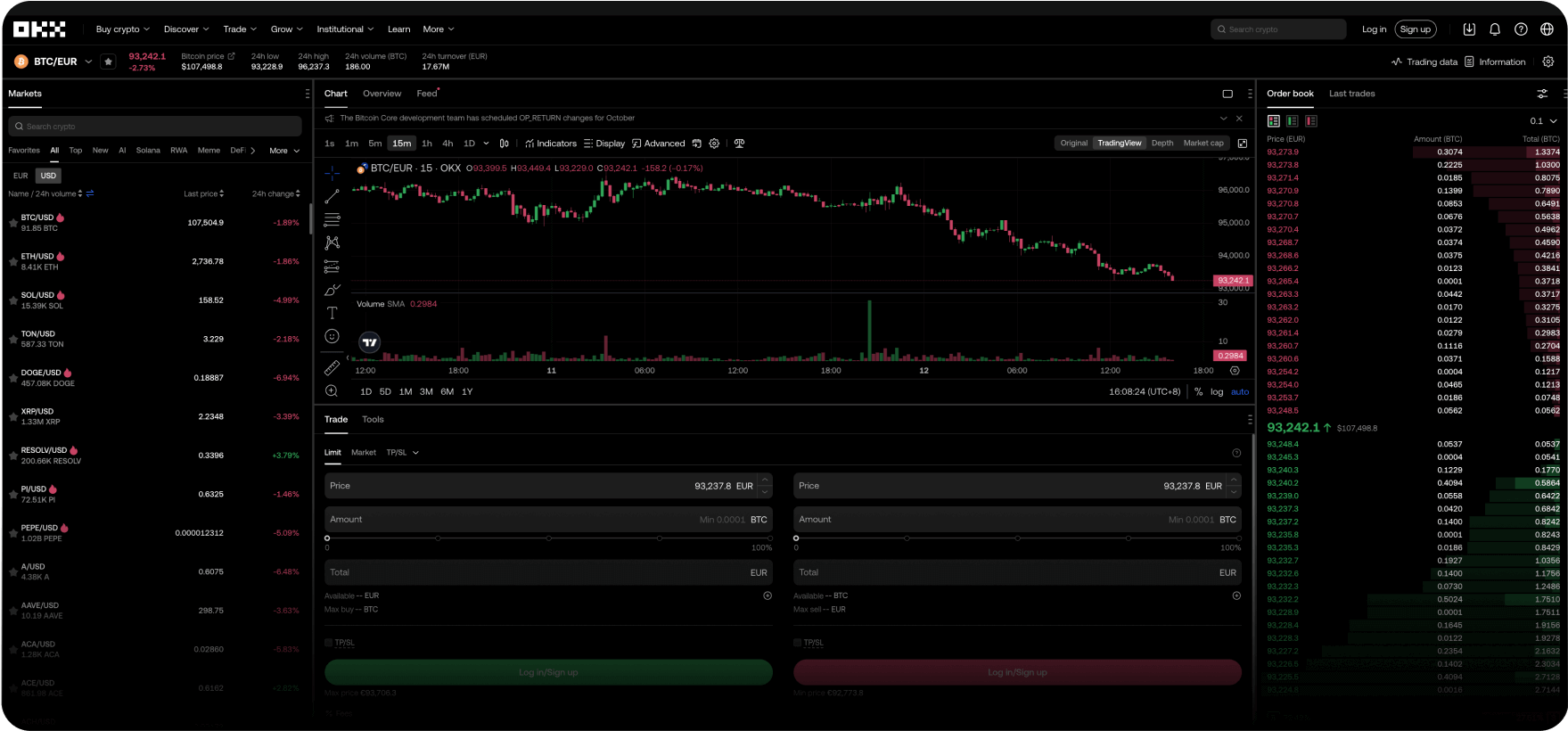Digitaalisten dollarien maailmanlaajuinen tilisi
Hyödynnä alhaisimmat maksut, nopeat transaktiot, tehokkaat API:t ja paljon muuta.

Mukanasi joka vaiheessa matkan varrella
Me opastamme sinua prosessin aikana aina ensimmäisestä kryptokaupastasi kokeneeksi treidaajaksi kehittymiseen asti. Mikään kysymys ei ole liian vähäpätöinen. Ei unettomia öitä. Tutustu kryptoihin luottavaisin mielin.
Valmentaja Pep Guardiola
Selittää ”hullun jalkapallomuodostelman”
Kirjoita järjestelmä uudelleen
Tervetuloa käyttämään Web3:a
Lumilautailija Scotty James
Tuo mukanaan koko perheensä
Onko sinulla kysymyksiä? Me voimme vastata niihin.
Mitä tuotteita OKX tarjoaa?
Kuinka voin ostaa bitcoinia ja muita kryptovaluuttoja OKX:ssä?
Missä OKX:n toimipaikka sijaitsee?
Voivatko Euroopan unionin asukkaat käyttää OKX:ää?



